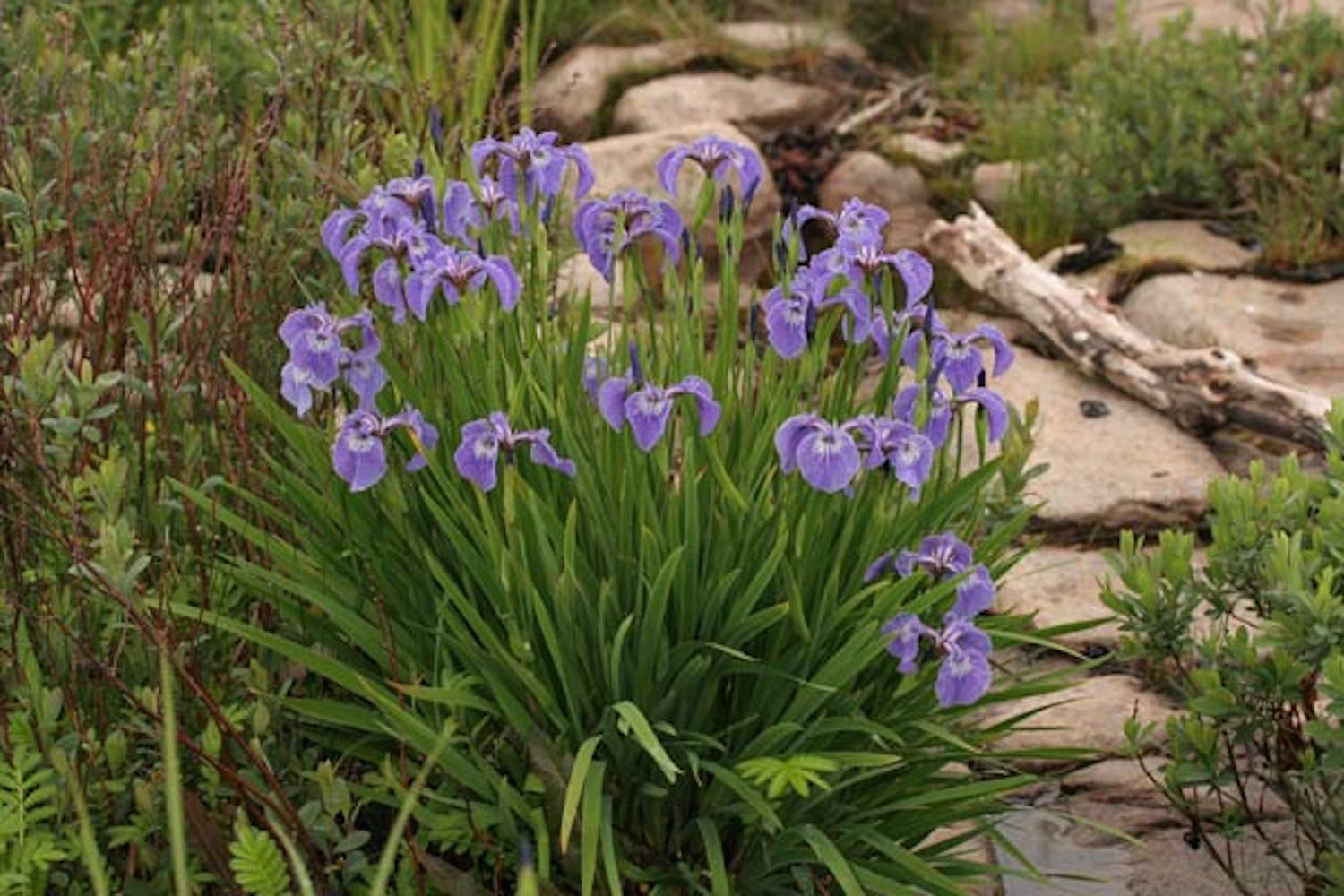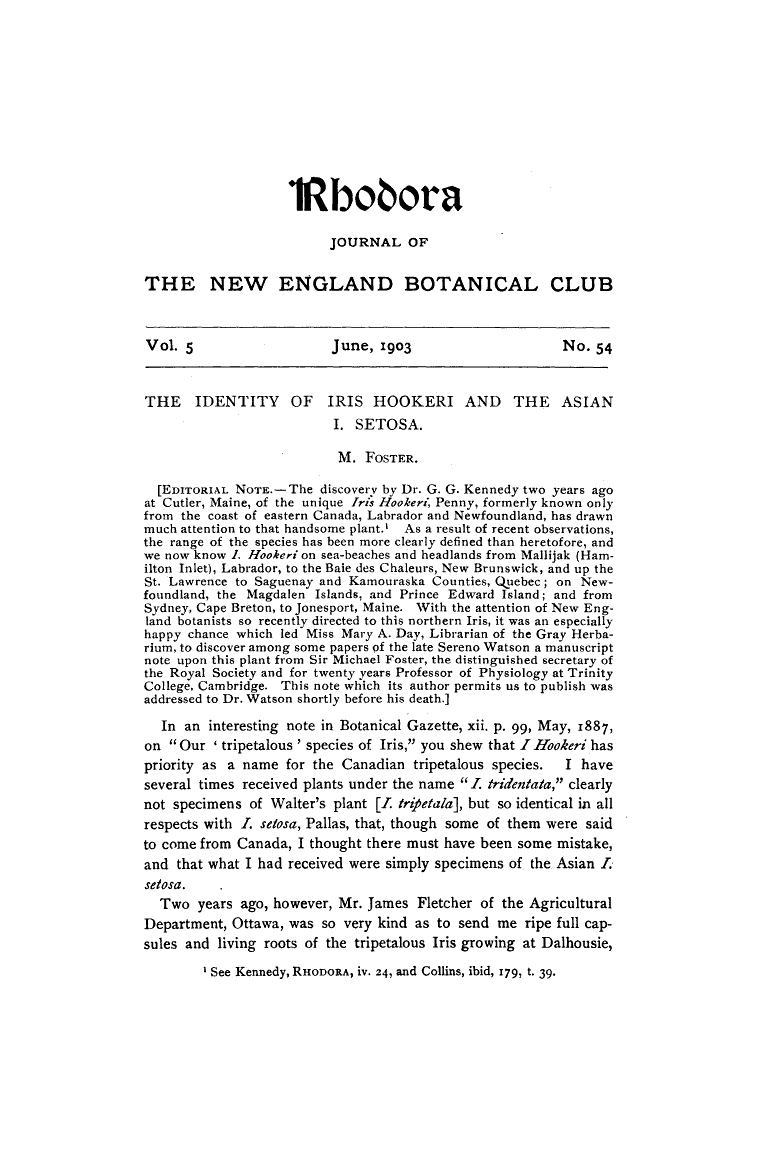Iris hookeri
Approx. 0.5 litre pot
About this cultivar:
Iris hookeri is a fun dwarf iris native to Newfoundland, Nova Scotia, Quebec, and Labrador. So it doesn't mind the cold! In its native haunts, it usually grows within reach of the ocean spray where the soil is mostly acidic but it should grow fine in most conditions (albeit slowly). Plants are variable in size, ranging from 10-35 cm. The flowers are generally a mid-blue but rarely you may encounter lavender forms or even white. Generally flowers for two months sometime between April and July.
Not just for rock gardens! Worth a try at the front of the border, or in some other surprising location.
This plant has changed names several times in the past. While originally described as Iris hookeri, it was later reclassified as Iris setosa ssp. canadensis. Recently it was once more segregated back to Iris hookeri. Iris setosa is essentially a Eurasian species which is quite tall in comparision.
The specific epithet hookeri refers to Sir Joseph Dalton Hooker (1817-1911) a British botanist and explorer in the 19th century. He was a founder of geographical botany and Charles Darwin's closest friend. For twenty years he served as director of the Royal Botanical Gardens, Kew, succeeding his father, William Jackson Hooker, and was awarded the highest honours of British science.
- Position: Full sun, partial shade
- Soil: Almost any soil, grows well in Ballyrobert
- Flowers: April, May, June, July
- Other features: Suitable for Container
- Hardiness: H7 - Hardy in the severest European continental climates (< -20°C), Fully hardy - grows well in Ballyrobert
- Habit: Clump forming
- Foliage: Deciduous
- Height: 10 - 35 cm (0.5 - 1 ft)
- Spread: 10 - 25 cm (0.5 - 1 ft)
- Time to full growth: 2 to 5 years
- Plant type: Herbaceous Perennial
- Colour: Green, blue
- Goes well with: Hosta, Hemerocallis, Geranium
About this genus:
Iris (i-ris) is a genus of 260–300 species of flowering plants with showy flowers. It takes its name from the Greek word for rainbow, referring to the wide variety of flower colours found among the many species. As well as being the scientific name, Iris is also used as a common name. Long in cultivation there seem to be as many cultivars as plants. Culturally the genus has had quite an impact. The fleur-de-lis, a stylized Iris, first occurs in its modern use as the emblem of the House of Capet (rulers of France 987 to 1328). It is also the universal symbol for Scouting. Many artists have a 'thing' with Iris, not least Van Gogh- who was a fan of Iris (not just sunflowers).... see images opposite!
As a group, Iris species can range from drought-tolerant dry land perennials to bog dwellers and from sun to shade, so there is no set of cultivation rules for the genus as a whole. In general though the cultivars we have in our garden (and sell), are tough, low maintenance plants perfect for wet gardens and similar sites.
Try pairing irises in the garden with Hosta, Hemerocallis, Geranium. They also look great as a cut-flower; the reason you don't get them in florists is that they don't transport well.






